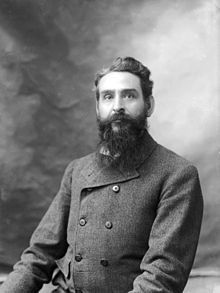THROUGH RAMONA’S COUNTRY [SOLD]
 Forward to Friend
Forward to Friend
- Subject: Southwest
- Item # C3498X
- Date Published: Hardback, first edition, 1909, ex-Libras, library binding
- Size: Over 100 illustrations, 406 pages SOLD
THROUGH RAMONA’S COUNTRY By George Wharton James
Publisher: Little, Brown, and Company, Boston
Hardback, first edition, 1909, ex-Libras, library binding
Over 100 illustrations, 406 pages
Condition: ex. Libras but in very good condition with exception of rubber stamp of Public Library on bottom edge and a few pages whose lower corners are creased. The text is very readable and without markings or damage.
“At the outset it cannot be too clearly and positively stated that the story of Ramona is a wonderful mosaic of fact and fiction. Just as the detached and dissimilar pieces of mosaic, of different color, of different origin, perhaps, and gathered from various sources are fitted together and held to each other in one coherent mass in the matrix of binding cement, so the isolated, unrelated, and different facts in the story of Ramona are held together in one coherent mass by the binding fiction of the author’s genius. As I shall show later there is scarcely a statement of fact relating to the country, the Spanish home life, of description, of the treatment of the Indians, etc., in the whole book that is not literally true, but it is not true as related to the fictitious hero and heroine of the book, who are pure creations of the author’s brain. Yet even here she was aided by what she saw, and, as we shall see, facts that actually occurred were woven into the lives of her fictitious hero and heroine.

“As one well-known Southern California writer has well said: ‘The story of Ramona is, one ought not to need to say, pure fiction. Ramona never lived, nor Alessandro, nor the Señora Moreno, nor any one else in the book. The commonest and cheapest lies told in California are perhaps those of people who knew the original Ramona or the half-breed Indian, Alessandro, who was killed for horse-stealing, and all the rest of this silly basking of the small in the sunshine of greatness.’
“Let it never be forgotten, then, that Ramona is a structure composed of fact and fiction; that while the story as a whole, the hero, and heroine are fictions, many of the isolated facts of the romance had their absolute origin in the life history of this unfortunate people. The descriptions of the Missions of Southern California, of the habits of the Spaniards, Mexicans, and earlier Americans, and of the life and condition of the Indians, are no less historically true than graphic and powerful. Hence the book is more than a novel. It is more than a history. It is more true than fact, for it is no less true than paradoxical that ‘there are many things more true than fact.’ It is a contribution to the history of our treatment of the Indians that is worth more to the American people than all the official reports of a score of Indian bureaus. It has awakened public sentiment and the public conscience on behalf of the Indians, and one result of its publication has been a decided change in the attitude of the better class of politicians towards these, their helpless wards.
“There is no denying the statement that Ramona has done more to arouse sympathy in the minds of the American people for the Indian than all other causes put together. The sweet, tender pathos of the story, Mrs. Jackson’s profound oneness with the love-stricken hero and heroine and their afflicted people, her exquisite touches of description, her keen appreciation of all good in the Indian and the strong points in their character, her consummate literary skill, all combined to make Ramona a power in the land.
“It is to further contribute to the good work begun and carried on in so masterly a manner and to give to the people at large many facts that nearly thirty years of gleaning have gathered that I have presumed to write the following pages. If they aid in deepening the practical sympathy of the American people for an unfortunate and dying race I shall be gratified and satisfied.”
Signed: George Wharton James Pasadena, California, August 1908
TABLE OF CONTENTS
1. Why Ramona was Written
2. The Facts and Fictions of Ramona
3. Was there a Real Ramona
4. Was there a Real Alessandro
5. Are the Characters of Ramona and Alessandro too Ideal
6. The Home of Ramona
7. San Gabriel, the Birthplace of Ramona
8. The Ramona Jewels
9. The Original of Jim Farrar
10. The Original of Aunt Ri
11. The Village of Sabora and Ramona
12. The Cahuilla Ramona and her Story
13. Ramona’s Star Basket
14. An Indian’s Funeral in Ramona’s Graveyard
15. The Indians of Ramona’s Country
16. Three True Stories of Indians in Ramona’s Country
17. Basket-Weaving among Ramona’s Indians
18. Indian Evictions in Ramona’s Country
19. Mount San Jacinto and its Legends
20. The Legend of the advent of the Sabobas
21. The Study of Folk Lore in Ramona’s Country
22. Ramona and the Franciscan Missions
23. The Indigenous Architecture of Ramona’s Country
24. The Coronels and the Author of Ramona
25. Mrs. Jackson and Abbott Kinney
26. A Few Letters by the Author of Ramona
27. The Staging of Ramona
28. Ramona’s Country in Ramona’s Day
29. Ramona’s Country To-Day
30. A Climatic Wonderland

- Subject: Southwest
- Item # C3498X
- Date Published: Hardback, first edition, 1909, ex-Libras, library binding
- Size: Over 100 illustrations, 406 pages SOLD
Publisher:


